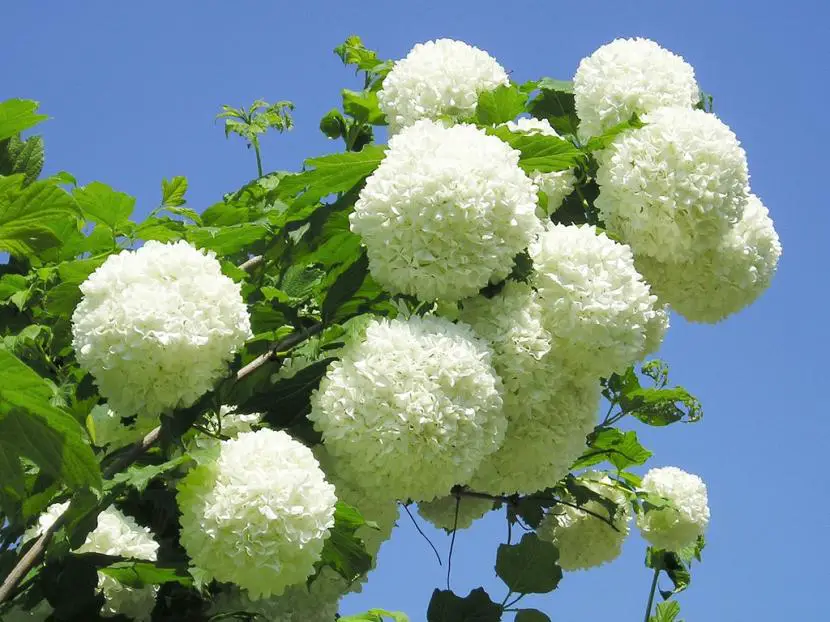
Viburnum’s wealth
In gardens, a type of plant that stands out a lot is the shrub, especially if it has striking flowers or leaf color. We are going to introduce you to Viburnumwhich in addition to being very easy to care for, can live in temperate climates.
Do you want to know it?

Viburnum macrocephalum f. keteleeri
The Viburnum genus comprises around 160 species distributed throughout the Northern Hemisphere, although you will also find them in Africa, specifically in the Atlas Mountains. Its green leaves are perennial, but if the weather is cool they can fall to sprout again in spring.
The flowers, which appear during the spring season and / or in summerThey have five petals, and can be white, cream or pink depending on the species. The fruit is a red drupe that birds love. It contains a single seed that you can sow in a pot in the fall, or keep it in a clean, dry place until the good weather returns.

Viburnum plicatum var. plicatum
If we talk about the cultivation, we are facing a very grateful plant, that will give us great satisfaction throughout the year. It will have to be planted in an exhibition where it receives direct sunlight, or in those areas where it has a lot of light; otherwise it would have growth problems. It is not demanding in terms of the type of soil, but it will vegetate better in those that have good drainage, with a pH between 6 and 7.
We will water our Viburnum twice a week during the hottest season, and once every seven days the rest of the year. To get a more vigorous plant, with a greater number of leaves and with an abundant flowering, it is recommended to pay from spring until the end of the summer season using for this a natural fertilizer such as guano or worm castings.
Do you have this shrub in your garden?
